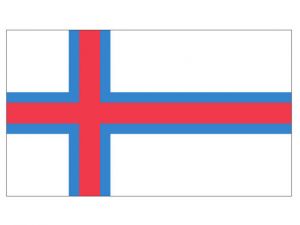Difference between revisions of "Language/Faroese/Vocabulary/Telling-Time"
m (Quick edit) |
m (Quick edit) |
||
| Line 86: | Line 86: | ||
<span gpt></span> <span model=gpt-3.5-turbo></span> <span temperature=1></span> | <span gpt></span> <span model=gpt-3.5-turbo></span> <span temperature=1></span> | ||
==Other Lessons== | |||
* [[Language/Faroese/Vocabulary/Drinks|Drinks]] | |||
* [[Language/Faroese/Vocabulary/Numbers-1-20|Numbers 1 20]] | |||
* [[Language/Faroese/Vocabulary/Express-Surprise|Express Surprise]] | |||
* [[Language/Faroese/Vocabulary/Animals|Animals]] | |||
* [[Language/Faroese/Vocabulary/Count-to-10|Count to 10]] | |||
* [[Language/Faroese/Vocabulary/Introducing-Yourself|Introducing Yourself]] | |||
* [[Language/Faroese/Vocabulary/Common-Foods|Common Foods]] | |||
* [[Language/Faroese/Vocabulary/Feelings-and-Emotions|Feelings and Emotions]] | |||
* [[Language/Faroese/Vocabulary/How-to-Say-Hello-and-Greetings|How to Say Hello and Greetings]] | |||
{{Faroese-Page-Bottom}} | {{Faroese-Page-Bottom}} | ||
Revision as of 21:23, 2 April 2023
Introduction
In this lesson, you will learn how to tell time in Faroese. Telling time is an essential part of communication and is invaluable when traveling, meeting friends, or making appointments.
Faroese has a unique way of telling time that uses a 24-hour clock. In addition, there are different ways to express time depending on the context and regional dialects.
Let's start by learning the basics of telling time in Faroese.
Hours
In Faroese, we use the 24-hour clock to tell time. This means that we use numbers from 0 to 23 to represent each hour of the day.
To express a specific hour in Faroese, we simply use the corresponding number. For instance, if it is 3 o'clock, we would say "klokkan trý". Here are some examples:
| Faroese | Pronunciation | English |
|---|---|---|
| Klokkan eitt | klohk-ahn ayht | One o'clock |
| Klokkan fimm | klohk-ahn feem | Five o'clock |
| Klokkan tólf | klohk-ahn tohlv | Twelve o'clock (noon or midnight) |
| Klokkan tjúgu | klohk-ahn tyoo-goo | Twenty o'clock (8 p.m.) |
Note that there are regional variations in the way time is expressed, particularly in the southern part of the Faroe Islands. For instance, some people may say "klokkan átta" instead of "klokkan tólf" to mean midnight or "klokkan seks" instead of "klokkan tjúgu" to mean 6 p.m.
Minutes
To express minutes, we use the word "mínuttir" (minutes) followed by the corresponding number in Faroese. For example, if it is 2:15, we would say "Klokkan tvey og fímtán minnuttir" (Two o'clock and fifteen minutes). Here are some examples:
| Faroese | Pronunciation | English |
|---|---|---|
| Klokkan trý og hálv tvær | klohk-ahn try oh hawl-uh twoh (literally: half past two) | 2:30 |
| Klokkan fjógur og fjórða | klohk-ahn fyoh-goor oh fyohr-thah | 4:04 |
| Klokkan átta og seksti | klohk-ahn ow-tah oh sek-sti | 8:60 (9:00) |
| Klokkan tíu yvir fimm | klohk-ahn tee-oo yvir feem | 5:10 (ten past five) |
Note that for minutes between 1 and 9, we use the word "og" (and) to separate the hours and minutes. For instance, for 2:05 we would say "Klokkan tvey og fimm" (Two o'clock and five minutes).
Parts of the Day
In addition to hours and minutes, we also use specific phrases to indicate different parts of the day. These phrases can be used in combination with the 24-hour clock or alone to indicate morning, afternoon, and evening.
Here are some examples:
| Faroese | Pronunciation | English |
|---|---|---|
| Morgun | mor-ghoon | Morning |
| Dagur | dah-goor | Daytime |
| Eftir- og Kvøld | ehf-teer oh kvlv-lth | Afternoon and Evening |
| Nátt | now-th | Night |
To combine these phrases with the time, we use the preposition "á" (at) or "um" (around). For example, "Klokkan seks á kvøldí" means "It's 6 p.m." in English.
It is worth mentioning that Faroese speakers also use phrases such as "soleiðis" (approximately) or "harumtrent" (around) to indicate an approximation of time.
Conclusion
In this lesson, you have learned how to tell time in Faroese. You have learned that Faroese uses the 24-hour clock and that there are regional variations in the way time is expressed. You have also learned how to express minutes and how to use specific phrases to indicate different parts of the day.
Remember that the best way to improve your skills is to practice regularly, so do not hesitate to test your knowledge by asking a Faroese speaker what time it is!
